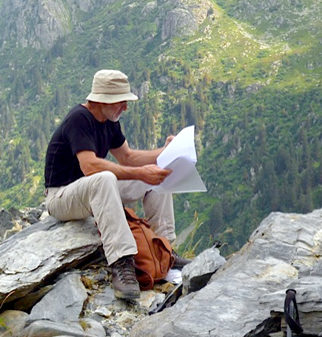
Office hours: Mon - Fri 09:00 - 17:30; Sat 09:30 - 13:00
Office hours: Mon - Fri 09:00 - 17:30; Sat 09:30 - 13:00
Office hours: East Coast USA: Mon - Fri 09:00 - 17:30 (04:00 - 12:30 local time); Sat 09:30 - 13:00 (04:30 - 08:00)
West Coast USA: Mon - Fri 09:00 -17:30 (01:00 - 09:30 local time); Sat 09:30 - 13:00 (01:30 - 05:00)
Office hours: Ottawa: Mon - Fri 09:00 - 17:30 (04:00 - 12:30 local time); Sat 09:30 - 13:00 (04:30 - 08:00)
Vancouver: Mon - Fri 09:00 - 17:30 (01:00 - 09:30 local time); Sat 09:30 - 13:00 (01:30 - 05:00)
Office hours: Canberra: Mon - Fri 09:00 - 17:30 (20:00 - 04:30 local time); Sat 09:30 - 13:00 (20:30 - 24:00)
Office hours: Mon - Fri 09:00 - 17:30 (22:00 - 06:30 local time); Sat 09:30 - 13:00 (22:30 - 02:00)
Office hours: Mon - Fri 09:00 - 17:30 (check internet for local time equivalent); Sat 09:30 - 13:00
An ‘Ode to Joy’ on the Rhine…
Visitors to Vienna can hardly fail to notice that this year marks the 250th anniversary of the birth in 1770 of one of the greatest and most influential of classical composers – Ludwig van Beethoven – who spent much of his life in the city. But what of his birthplace in Germany? Is it possible to escape the city crowds by remembering the great man in his homeland?
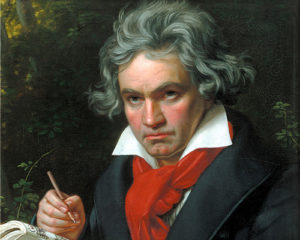 Born in Bonn on the banks of the Rhine, young Ludwig grew up in a musical household, and was Deputy Organist in the court of the Elector of Cologne by the tender age of 14. In 1791 came an invitation to travel as viola player with the court orchestra on a trip along the Rhine, Main and Tauber rivers, a voyage that was remembered with fondness by Beethoven in later years as “a fruitful source of loveliest visions”. The relaxed and jolly mood on board was epitomised by the handing out of supposed positions in the ship’s ‘court’, where Beethoven as the youngest of the party was nominally demoted to Kitchen Scullion.
Born in Bonn on the banks of the Rhine, young Ludwig grew up in a musical household, and was Deputy Organist in the court of the Elector of Cologne by the tender age of 14. In 1791 came an invitation to travel as viola player with the court orchestra on a trip along the Rhine, Main and Tauber rivers, a voyage that was remembered with fondness by Beethoven in later years as “a fruitful source of loveliest visions”. The relaxed and jolly mood on board was epitomised by the handing out of supposed positions in the ship’s ‘court’, where Beethoven as the youngest of the party was nominally demoted to Kitchen Scullion.
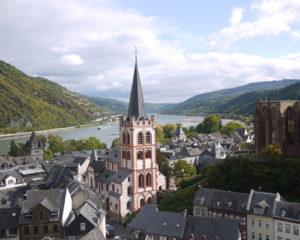 The Rhine was narrower and more treacherous in those days, and the travellers had to disembark before Rüdesheim and walk over the hill to board another ship. Stopping on the slopes overlooking Bingen, Beethoven was presented with an elaborate certificate promoting him to less menial duties, which he kept with him for many years as a reminder of happy times.
The Rhine was narrower and more treacherous in those days, and the travellers had to disembark before Rüdesheim and walk over the hill to board another ship. Stopping on the slopes overlooking Bingen, Beethoven was presented with an elaborate certificate promoting him to less menial duties, which he kept with him for many years as a reminder of happy times.
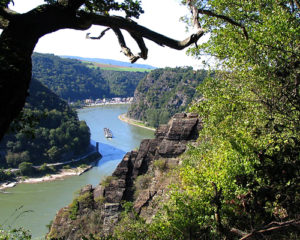 You can walk the most spectacular section of Beethoven’s journey with On Foot Holidays, from Bingen northwards to Koblenz. Our self-guided route through this World Heritage Site will take you along the wooded slopes, to castles towering over the gorge, and back down to the pretty medieval villages at the water’s edge for a well-deserved bier or glass of local Riesling.
You can walk the most spectacular section of Beethoven’s journey with On Foot Holidays, from Bingen northwards to Koblenz. Our self-guided route through this World Heritage Site will take you along the wooded slopes, to castles towering over the gorge, and back down to the pretty medieval villages at the water’s edge for a well-deserved bier or glass of local Riesling.
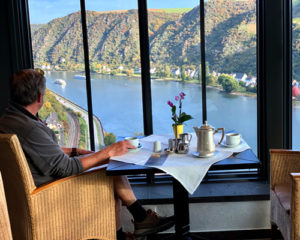 Visit the birthplace of Beethoven’s mother in Koblenz-Ehrenbreitstein at the end of the walk, and make time as you pass through Bonn before or after your holiday to see the Beethoven-Haus museum in the house where he was born, as well as looking out for the many anniversary celebrations throughout the year. And if you listen carefully, you may just hear the Ode to Joy resounding from the cliff-faces as you pass along the gorge.
Visit the birthplace of Beethoven’s mother in Koblenz-Ehrenbreitstein at the end of the walk, and make time as you pass through Bonn before or after your holiday to see the Beethoven-Haus museum in the house where he was born, as well as looking out for the many anniversary celebrations throughout the year. And if you listen carefully, you may just hear the Ode to Joy resounding from the cliff-faces as you pass along the gorge.
Read more about the Rhine Romantics here.
Gothic castles, rugged cliffs, woodland tumbling down to the water’s edge, a paddle steamer plying the river – this could describe the Rhine gorge of today or 200 years ago. Hikers on our Castles of the Rhine walking holiday follow in the footsteps of the poets, painters and musicians who put the area on the map and gave birth to Rhine Romanticism.
“To me, the only beautiful land 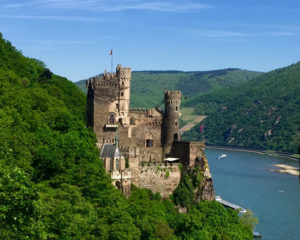 scape is one that is normally called rough and wild” – so wrote Friedrich Schlegel in 1802, describing a new landscape aesthetic that rejected the formality of the Baroque and Classical years. It’s easy to see why the narrow, rocky valley, with its abundant nature and soaring medieval ruins, appealed to romantic sensitivities. You can even hear the water irresistibly flowing through the gorge in the second movement of Robert Schumann’s Rhenish Symphony.
scape is one that is normally called rough and wild” – so wrote Friedrich Schlegel in 1802, describing a new landscape aesthetic that rejected the formality of the Baroque and Classical years. It’s easy to see why the narrow, rocky valley, with its abundant nature and soaring medieval ruins, appealed to romantic sensitivities. You can even hear the water irresistibly flowing through the gorge in the second movement of Robert Schumann’s Rhenish Symphony.
The poets Achim von Arnim and Clemens von Brentano wrote of their walk from Bingen to Koblenz, initiating a whole new genre of literature. The growing popularity of walking for pleasure in the early 19th century happily coincided with the inclusion of Germany on the “Grand Tour” itineraries of the young and wealthy. And so it was that Lord Byron passed this way, with his epic poem Childe Harold’s Pilgrimage, a thinly veiled account of his travels through Europe, appearing soon after.
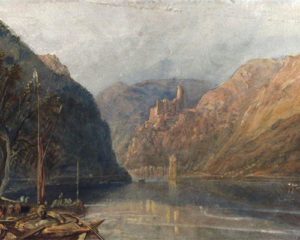
Artists couldn’t resist the charms of the Rhine either – the great English painter William Turner visited in 1817, and was one of the earliest to capture the dramatic aspect of the landscape. Walking in the opposite direction to our On Foot route, he filled notebooks with dozens of sketches that were developed into many watercolours over the coming years. A particular favourite scene was Ehrenbreitstein Fortress at the confluence of the Moselle and Rhine.
Inspired by the 200th anniversary of Turner’s walk, the William Turner Route project has identified 26 locations where Turner must have stood to make his sketches. The project is creating plaques to set into the ground at these places, accompanied by an excellent website where you can see the paintings and lots more. The first group of plaques has been installed around St Goar and St Goarshausen – watch out for them on your walk!
Read more about Beethoven’s journey along the Rhine here.
Our self-guided walking holidays pass through truly rural country, and local food and wine are, of course, high on the agenda for our walkers. Here, wines are produced largely for the local market, so have an individuality missing from the grandes marques. For the connoisseur looking for some interesting wines to relax with after a day’s walking, we’d like to recommend a few routes.
Little-known dry Rieslings from both banks of the Rhine Gorge go particularly well with food. There are some excellent chefs en route – notably Werner at Rhens, who specialises in “Wildgerichte”, particularly venison and wild boar. He recommends a local red wine – Dornfelder from Weingut Kronen-Hof – though a richer Riesling will also work well.
Our walk in the El Priorat region of Catalonia begins in Conca de Barbera wine country, and ends in Priorat. This is the place that scored American wine guru Robert Parker’s first 100% rating for a wine. At Porrera you can taste Priorat wines from various winemakers, based on the Garnacha (Grenache) grape.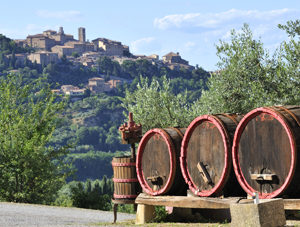
Galicia is a seafood lover’s paradise and the range available on our Lighthouse Way route is extraordinary. We liked “navajas” – razor clams, often in a garlic or white wine sauce. “Percebes”, the oddly-shaped goose barnacles, are harvested from the cliffs at great risk to life and limb, and are the iconic delicacy of the region. For wine lovers, Albariño is the best to have with seafood, though you might also try the more lowly Ribeira whites. There is an interesting red too (Mencia).
And so to Italy. The Oltrepo Pavese on the southern edge of the Po valley on our Ligurian Hills route is a delightful area of rolling vineyards producing little-known but immensely palatable reds and whites. The most quaffable is “Bonarda” – a slightly fizzy refreshing gulper for a hot summer’s day, but there are many more serious wines too. In Southern Tuscany you’ll find not one but two great wines – Brunello di Montalcino and Vino Nobile di Montepulciano – the acme of Sangiovese viticulture which will excite taste buds and can drain wallets.
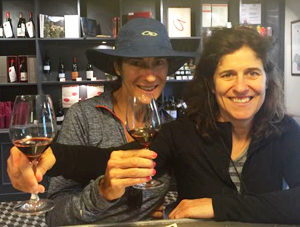 Slovenia was one of our first routes, and is still one of our favourites. It has a variety of drinkable whites from the Malvasia grape, and an unfathomable red – Teran (Terano in Italian), which requires a second bottle to get to proper grips with its charms. When you stay at Tomaj, you can taste our host Izidor’s own Teran along with his homemade prsut (prosciutto) and some local cheeses. There’s also a lunchtime wine tasting possibility at Klet Miska en route to Stanjel.
Slovenia was one of our first routes, and is still one of our favourites. It has a variety of drinkable whites from the Malvasia grape, and an unfathomable red – Teran (Terano in Italian), which requires a second bottle to get to proper grips with its charms. When you stay at Tomaj, you can taste our host Izidor’s own Teran along with his homemade prsut (prosciutto) and some local cheeses. There’s also a lunchtime wine tasting possibility at Klet Miska en route to Stanjel.
Finally, we can’t ignore France, of course. Our Northern Provence walk is centred around the Côtes du Rhone, linking the major wine areas of Vacqueyras, Beaumes de Venise and Gigondas, a stone’s throw from Chateauneuf du Pape. Stay with Thierry at Les Florets and drink his own excellent Vacqueyras reds and whites (Domaine La Garrigue), while sampling his chef’s regionally famous cuisine.
Simon, Director of On Foot Holidays, has valiantly sampled the wines on our routes, and will happily talk to you about them, so do give us a call if you would like more insights into what’s worth trying. Cheers!

